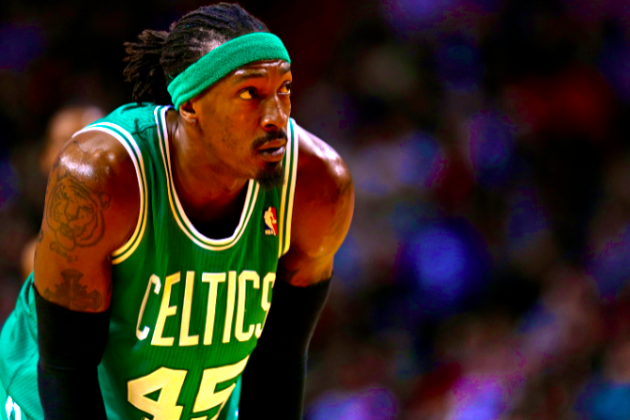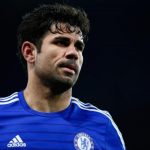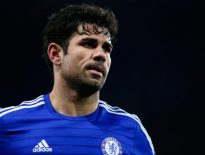Sixty NBA players are earning at least $10 million during the 2014-15 season. Boston Celtics small forward Gerald Wallace has played the fewest minutes among them beside Andrea Bargnani.

Unlike Bargnani, who has been limited to four games this year thanks to a calf injury, Wallace has been healthy for the majority of this season. Despite currently being the highest-paid player on the team, the 32-year-old has been stuck at the end of the bench for much of the season.
As of now, Wallace is on pace to play just under 250 minutes over a full 82-game slate, a dramatic decline after spending a minimum of 1,400 minutes on the floor during each of the past 10 seasons. In 30 of Boston’s 51 games this year, the coach’s decision has been for Wallace not to play.
Such is life for a veteran on a hefty contract playing for a team focused on the future.
The Celtics acquired Wallace in the summer of 2013—not because they wanted him but as part of the price for acquiring three future first-round picks from the Brooklyn Nets. He was part of the salary-filler (earning $10.1 million) for a blockbuster nine-player swap that sent Paul Pierce and Kevin Garnett to Brooklyn and jump-started the Celtics’ rebuilding plan.
Nineteen months later, Wallace is the last of the four players the Celtics obtained in that deal still playing in Boston, averaging a paltry 0.8 points over 7.4 minutes per game.
To most players, the current situation for the 6’7 forward would be a nightmare. With limited opportunities to get minutes on a young team and no looming trades waiting, thanks to an ugly contract that expires in 2016, there appears to be no escape route from Boston for the 13-year veteran.
That’s a recipe for discord in most locker rooms. But in the midst of his second season in Boston, Wallace has been able to handle veteran purgatory.
With a lot of guys that are older, it’s hard for them [to transition] from playing to being in that bench role, head coach Brad Stevens told Bleacher Report. Gerald’s been awesome. I think he’ll go down as one of my favorites when it’s all said and done since he swallows his ego for everyone else.
While Wallace may be one of Stevens’ favorites, the front office would dump Wallace if it didn’t cost assets to do so. In the meantime, both sides are trying to make the best of a situation neither party wanted in the first place.
A Quick Fall from Grace
Brooklyn’s acquisition of Wallace at the 2012 trade deadline may go down as one of the worst deals in recent league history. General manager Billy King was looking to improve his roster to help convince future marquee free agents, such as Deron Williams, to re-sign with the Nets that offseason.
That mindset led to a trade with the Portland Trail Blazers, and King sent a top-three protected first-round pick along with some salary-filler for Wallace.
The Blazers ended up selecting point guard Damian Lillard with the Nets’ pick at No. 6 overall in the 2012 draft. Meanwhile, King doubled down on making sure Wallace was part of the team’s core. The small forward was 29 years old when the Nets signed him to a four-year, $40 million extension in July 2012.
It took mere months for the Nets to realize that deal was a mistake. Wallace’s offensive numbers fell off dramatically during the 2012-13 season, and Brooklyn had a disappointing exit in the first round of the postseason. His sizable salary became an albatross, leading to his inclusion in the Pierce-Garnett deal.
Make no mistake: Many of the first-round picks included in that transaction were to compensate the Celtics for taking on the final three years of Wallace’s contract.
I don’t even look back on it, Wallace said of his brief stint in Brooklyn. It is what it is. You move on from it. You take your time in the NBA as a blessing.”
When Wallace arrived in Boston for training camp in September 2013, he quickly tried to establish himself as one of the team’s leaders. He called out teammates during the preseason for being selfish, according to A. Sherrod Blakely of CSNNE.com, and that outburst started a trend of public criticism.
The constant whining by an overpaid veteran averaging just 5.1 points per game during the 2013-14 season was not taken well by Celtics fans, as noted in a November 2013 blog post by the Celtics fan site RedsArmy.com.
With a mismatched roster and a new head coach in Stevens trying to find his way, hearing from a guy the team didn’t want around anyway was a tough pill for fans to swallow, even if Wallace’s intentions were positive.
Luckily, Wallace elected to scale back some of his rhetoric as his first season in Boston progressed. His public outrage about the team’s play diminished as the months wore on and has been virtually nonexistent this year, as the small forward has transitioned to being a benchwarmer for most games.
Unlike former veteran shooting guard Keith Bogans, who the Celtics sent home with pay last December after he became a dissatisfied end-of-the-bench player, Wallace has tried valiantly to remain a useful member of the team off the court.
Coaches’ Liaison
Keeping a pulse on a locker room is a tough task for any head coach. In Boston’s rebuilding climate, with a packed depth chart at multiple positions, that job is even tougher.
Different players can have different priorities, and constant losing will test the focus of any player, young or old, as the season wears on.
To ensure their message is getting across, Stevens and his staff have leaned on Wallace to serve as a go-between.
I try to let [Stevens] know what’s going on from the guys’ perspective inside the locker room, Wallace explained. I try to keep him updated on what the guys want and how the guys are feeling. I’m his coaching side of the locker room.
It’s a valuable tool for a young coach, as Stevens is still working to build a strong relationship with his players.
It’s why a lot of teams keep a lot of veterans around, Celtics assistant coach Walter McCarty said. [Wallace] has been around the league. He understands the players’ point of view. He’s a guy who can be honest with players. He’s another voice on the bench that really helps us out and tells us what’s going on, what we need to do, what we need to try.
McCarty played 10 NBA seasons, ending in 2005-06, before transitioning into a coaching role. The former small forward reflected on some of the players who had served as liaisons during his career, such as Herb Williams, current Oklahoma City Thunder head coach Scott Brooks and Bo Outlaw.
I began as one of those guys in my last year in the league with the Los Angeles Clippers. Most of the time, it’s teams that are really young and trying to rebuild, McCarty said.
So, in what situations does Wallace come in handy for the coaching staff?
You know when you’re in a conversation and someone is not quite giving you everything? Stevens asked. They got something on their mind that they are not quite sharing, and you just know they aren’t sharing it…that’s not Gerald. He tells you exactly what he thinks and exactly what is going on, and I absolutely love it because he doesn’t operate in the gray. He doesn’t mince words.
Stevens also often takes Wallace’s temperature to decide when and how he wants to send a message to the team.
I had a meeting the other day with the guys, and I said a few things, and I pulled Gerald aside right before we started practice and asked, ‘Was that appropriate in your eyes?’ And he said, ‘Absolutely.’ I [check] with him [after sending the team a strong message] too.
Wallace’s transformation has earned him plenty of praise in the media and reluctant acceptance from Celtics fans. People understand it is not Wallace’s fault he’s overpaid, and the payoff (three first-round picks) the team received for acquiring him will pay dividends. In the meantime, Wallace’s teammates like having him around.
I think he always speaks up and tries to help us develop, Evan Turner said. When he practices, he brings physicality and toughness. He tries to bestow his wisdom on us.
Staying for the Long Haul?
For Wallace’s veteran teammates, the 2014-15 season has served as a showcase opportunity. In the midst of a massive rebuild, President of Basketball Operations Danny Ainge has been clear that the majority of the aging pieces of the roster are available for the right price.
Rajon Rondo and Jeff Green have already been shipped to Western Conference contenders, and new veteran additions Jameer Nelson and Brandan Wright have been sent packing as well.
With so many of his teammates heading to contenders, it’s fair to think Wallace would be jealous of their situations. He won’t admit to it publicly, though, and his teammates say they haven’t been able to detect any bitterness either.
That’s definitely tough, Turner said of Wallace being left behind while others get traded. He accepts it. I haven’t seen him complain about anything.
Remaining experienced parts, such as Brandon Bass, Marcus Thornton and Tayshaun Prince, are candidates to be dealt or bought out in the upcoming weeks to join potential contenders. Outside of Wallace, anyone who is not part of the Celtics’ long-term plans may be gone by March 1 (the league’s deadline to buy out players).
So, why isn’t the veteran wing as likely to go as the others? He surely is on the trade block, but Wallace’s lack of court production and hefty salary do not make him an ideal trade candidate.
He’s also lost plenty of the athleticism and quickness he relied on throughout his career, partially because of the season-ending left ankle and knee surgery he underwent last March. He’s healthy enough to play now, but he’s being used in spot small forward duty with Boston’s second unit, an opportunity that opened up after the team traded away Green.
Moving Wallace would cost the Celtics assets or future salary-cap space (by taking back bad contracts). The small forward is also set to earn $10.1 million next season, so a buyout isn’t a possibility unless Wallace is willing to sacrifice plenty of cash.
I understand my situation, Wallace said candidly. I’m still rehabbing my injury. I think right here being in my situation mentally is a perfect situation for me. I’m not ready to go yet. I still feel like I have a way to go with my knee and getting it to where I want to be at to be able to perform with a championship-caliber team.
Here [in Boston], rehabbing, helping the young guys, that’s my goal, he continued. That’s the goal I’ve made for myself this year. It’s not only to see the team improve but to see the guys individually improve as players, and right now, we are moving in the right direction.
It isn’t clear whether or not Wallace will get another chance to play with a contender. He isn’t sure how much longer he will play after his contract expires in the summer of 2016, and his declining skills and athleticism might make him a 12th man on any team, not just one trying to develop its youth.
As the Celtics continue to stay afloat in the Eastern Conference playoff race, sitting just 1.5 games out of the eighth spot despite the roster overhaul, Wallace can be proud of his work. He may not get credit for it in the box score, but his acceptance of a tough situation has made the rebuilding process in Boston just a bit easier for the Celtics locker room to handle.
Brian Robb covers the Boston Celtics for Bleacher Report. Follow him @CelticsHub on Twitter.





